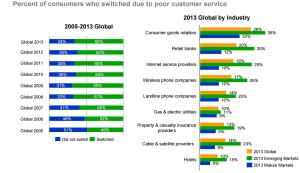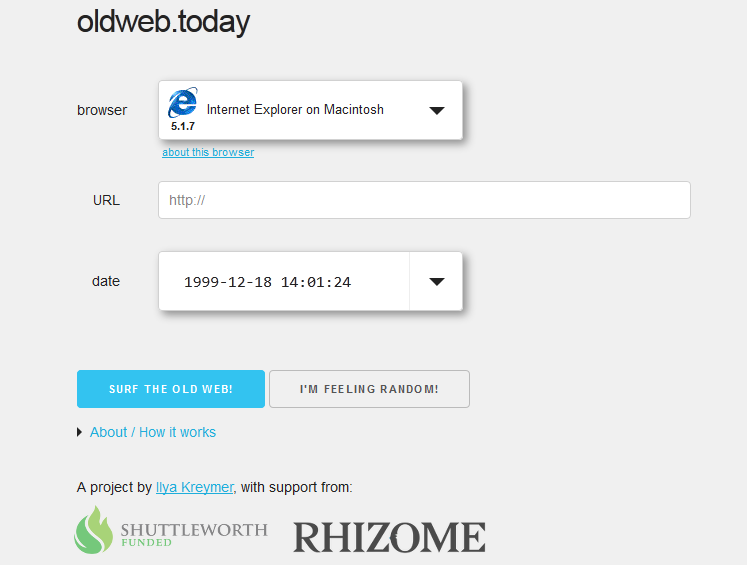Reading Time: 6 minutesThere it was; I could not access my email account anymore due to “unusual activity”. Recovering password etc. did not work either. My last option, calling the AOL customer service, which is unfortunately based in the US. Apart from the big time difference between the USA and my location at the time, the not existent Customer Service for accounts created in Germany, as well as the fact that the customer service on the phone just could not solve my problem; I was sure that I will never get access to my email account ever again.
After a little bit of browsing on AOL’s help pages. I found the companies twitter account. I actually never tried to solve my problems with products via social media, but it looked like it was my last shot at gaining access to my AOL account.
The big surprise, where the phone contact failed, the guy behind the AOL customer service twitter account was actually able to resolve my problem within 10 minutes. We exchanged 7 DM messages and that was it! Considering the fact that twitter also limits the number of characters, it was a very effective chat.
Being happy that I could solve my problem like that, I decided to look a bit deeper into social media customer service, also on the background of a project I’m working on currently. So is the future of customer service social media? I think yes – and – no! It will certainly become a part and one of the multiple channels we will be able to use. The phone is still the predominant customer service contact channel and in years to come it will remain almost untouched. Nevertheless, various new channels pop up and Social media might gain some “market share” from email based customer service for example. Online applications that allow customers to help themselves with a large amount of smaller problems, will become standard procedure and reduce the amount of actual customer contact with a customer service agent.
Customer service has to be proactive, but is social media the most proactive tool we can use? In my opinion it is and will definitely be one of the elements of proactive customer service. Simply because customers will demand that social media customer service is available, whether they use it or not. In a b2c environment this seems totally rational. In b2b, Social media based customer service has not established itself – yet. However, there are already a few voices out there that announce the rising importance of social media, even in a b2b environment. There are significant differences between b2b and b2c customer service, especially when it comes to social media, in general it can be a much more powerful tool in b2b! Social media in b2b is a perfect platform to exchange ideas and discuss problems with customers on eye level and transparent. It is just giving your customer another channel to make his or her voice heard and have rational discussions. In b2b it is much more unlikely that a customer will hurt your brand with overly emotional expressions of dissatisfaction in public, like you see it in b2c. E.g. LinkedIn is a good platform to exchange ideas with customers in closed or open groups.
Even today there is still a bit of rebellion in companies towards implementing a social media strategy effectively, however it was same with email and web pages and a lot of other things that seem essential today. There will always be early adopters and people afraid of change. Which one of them are you?
Here a summary of a few trends in customer service, not only social media, that are likely to shape customer service in the years to come.
Trends in Customer Service
Customer Service has gone through significant changes and development in the past few years and has become a lot more customercentric than it used to be. The focus shifted from being a cost centre to actually becoming a part of the organizations competitive strategy and creates sustainable competitive advantage. Especially in the logistics sector, sound customer service can be the deciding factor when choosing between different service providers.
Proactive Service
A proactive approach to customer service has turned out to be one of the most effective measures to improve the customers experience within a company and overall improve customer loyalty. Rather than reacting to customers problems, actively looking and preventing problems before they appear is key. Constant communication with customers improves the overall relationship. In practice, this means to alert customers of possible problems, advice and recommend better solutions and support the customer in their field of business. Being helpful, once a difficult situation arises.
Web tools and applications
This trend is very much connected to the above mentioned, as it is one way of seeking proactive communication with the customer. The webpage of an organization is nowadays usually on the front line of customer service, being the first stop most customers take when trying to get in touch with a company. Therefore it is crucial that the web presence is customercentric and in the best case already offers solutions to the most common problems or requests by customers.
A company’s website is, after word of mouth, the most important channel consumers use when prospecting. (Accenture, 2013)
Social Media
While already having established its place in the B2C business, social media is now also finding its way into the B2B world. It allows direct and fast communication and allows an organization to give itself a human touch. The main difference here is that social media in a B2B context is much more of a 2 way communication platform, compared to social media in B2C. Social media and professional platforms like LinkedIn can be utilized to open a discussion with customers and industry experts in order to address common issues or problems. In addition, the interaction in a B2B environment can be a lot more open as professionals are a lot less likely to contribute with unconstructive negative feedback, compared to an “angry customer” in B2C.
Furthermore, it is expected that in the next years to come, social media will evolve and become a much more significant part of the B2B business world as it already is among the market leaders.
Multi channel
Customer contact by phone is still by far the most used and preferred way of communication in terms of customer service
, followed by email and live chats. Nevertheless, the trend is going toward offering various channels of communication and shifting between the contact channels. E.g. Customer service may start on the phone, but the request will be solved by email.
Big Data
As customer service utilizes more and more technologies, various channels of communication and is shifting towards web-based applications, companies have a lot more data available. They key here is to utilize the gained data and use it to gain new insights into customer preferences, behavior and needs. Understanding the customer has become a lot easier, once the data is properly analyzed and evaluated. Not only the customer service itself, but different organizational functions like sales will benefit greatly from the new insights into the customer and maintaining a good customer relationship is that much easier when so much information is. Possibilities to respond faster and much more customized to the customer needs arise.
Combine Sales, Customer Service and Marketing functions
One of the major trends that will reshape entire organizational structure is the combination of sales and customer services, as well as Marketing. With growing emphasis on customer relationships, especially in b2b, the combination of the functions make sense. It reflects the necessity of the repeated effort to not only gain business once, but also continue to close deals with the same customer over a longer period of time. This development also reflects the customer centricity that will be required in the future. A combination of the different functions helps to deliver an end-to-end solution to the customer and keeps up the interaction between business and customer. A crucial rule and a point to start is to assign a central person that combines all the different departments: A Sales and Customer Service Manager for example. This will already help to maintain a more consistent service and overall customer service performance.

Accenture, 2013
Interesting figure, demonstrating the cultural differences associated to good customer service and customer relationships in the world.
Think I am making this all up? Think again: Forbes: Reasons you need to be using social media as your customer service portal
Zendesk as one of the leading Web based customer service management tools providers also provides you with a nice guide to improve your social media customer service strategy Zendesk: Customer Service through social media
Find an interesting Accenture report on the the “Consumer Pulse” and customer service here:
Accenture-Global-Consumer Pulse Research Study 2013 Key Findings







 llenging situation also for many shops that are currently still trading exclusively offline, facing a growing online competition, which is able not only to offer better prices, but also faster deliveries. In how many cases do you really need something right now? Might it not be more comfortable to order something in the morning and pick it up on your way home after work? A chance for offline shops to become part of the online landscape, enabled by platforms of various industries that make setting up your e-shop as easy as creating a Gmail address. Increase your reach of customers significantly, just by signing up on a webpage.
llenging situation also for many shops that are currently still trading exclusively offline, facing a growing online competition, which is able not only to offer better prices, but also faster deliveries. In how many cases do you really need something right now? Might it not be more comfortable to order something in the morning and pick it up on your way home after work? A chance for offline shops to become part of the online landscape, enabled by platforms of various industries that make setting up your e-shop as easy as creating a Gmail address. Increase your reach of customers significantly, just by signing up on a webpage.